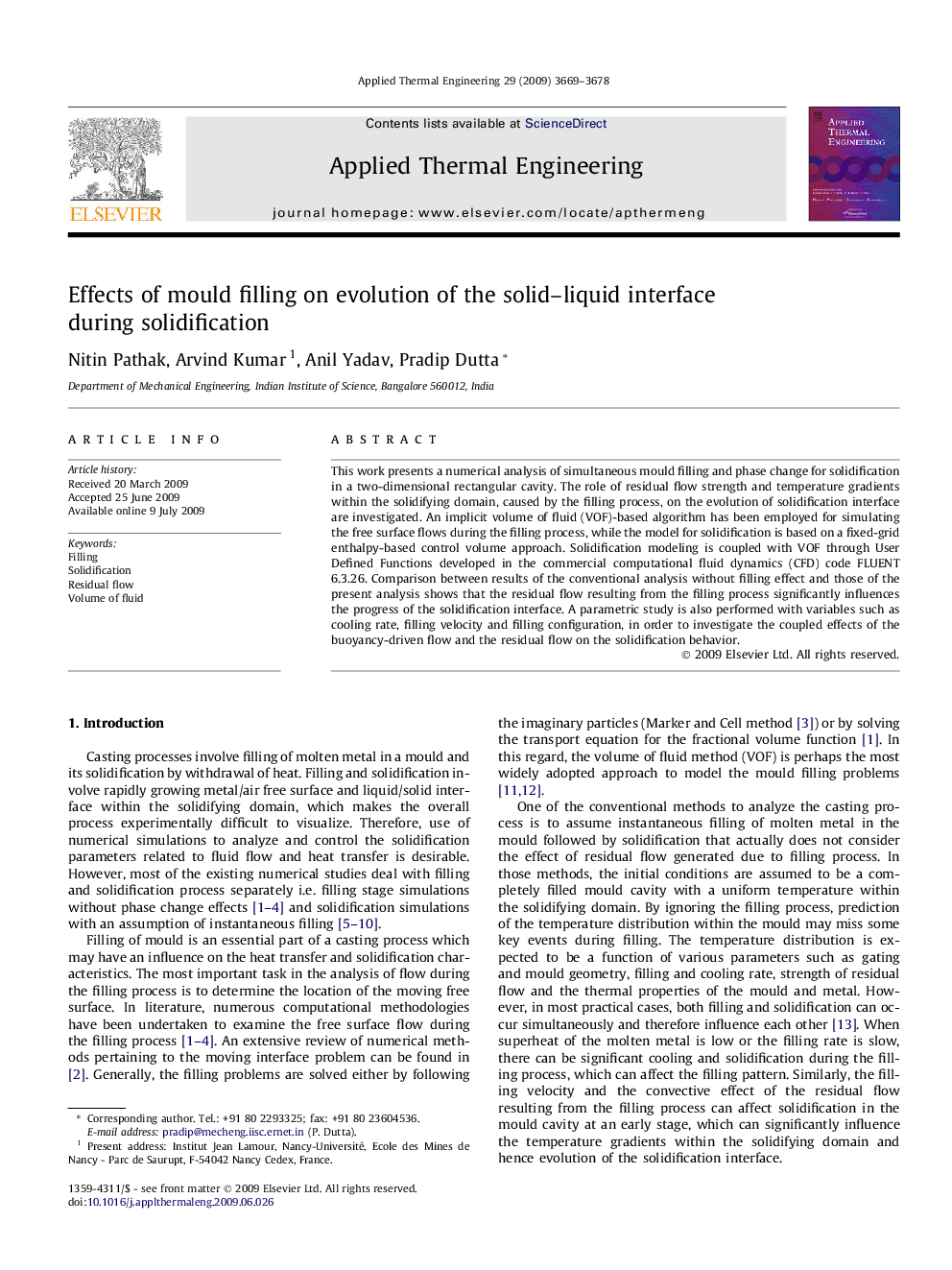| Article ID | Journal | Published Year | Pages | File Type |
|---|---|---|---|---|
| 648299 | Applied Thermal Engineering | 2009 | 10 Pages |
This work presents a numerical analysis of simultaneous mould filling and phase change for solidification in a two-dimensional rectangular cavity. The role of residual flow strength and temperature gradients within the solidifying domain, caused by the filling process, on the evolution of solidification interface are investigated. An implicit volume of fluid (VOF)-based algorithm has been employed for simulating the free surface flows during the filling process, while the model for solidification is based on a fixed-grid enthalpy-based control volume approach. Solidification modeling is coupled with VOF through User Defined Functions developed in the commercial computational fluid dynamics (CFD) code FLUENT 6.3.26. Comparison between results of the conventional analysis without filling effect and those of the present analysis shows that the residual flow resulting from the filling process significantly influences the progress of the solidification interface. A parametric study is also performed with variables such as cooling rate, filling velocity and filling configuration, in order to investigate the coupled effects of the buoyancy-driven flow and the residual flow on the solidification behavior.
